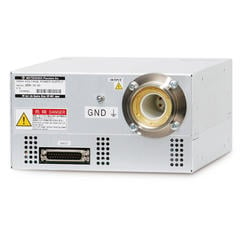An electron microscope is a microscope that observes objects by applying electrons (electron beams) to them. In ordinary microscopes (optical microscopes), light (visible light) is shone on the object to be observed, and the reflected light is magnified to observe the object. However, electron microscopes use electrons on the object instead of light.
Compared to visible light, the electron beam has a much shorter waveform and thus has a higher resolution. This is because it can detect steps and other differences that cannot be captured as "differences" with visible light. This makes it possible to observe very small objects that could not be observed with an engineering microscope.
There are many types of electron microscopes depending on the application and purpose, but they can be broadly divided into two types: Transmission Electron Microscopes (TEM) and Scanning Electron Microscopes (SEM).
Transmission electron microscopes apply an electron beam to a sample and observe the transmitted electrons under magnified light. In the transmission electron microscope, a voltage is applied to the electron beam and it is accelerated to penetrate the object. Therefore, only thin materials that can be penetrated by an electron beam can be used for observation.
Scanning electron microscopes apply a narrowly focused electron beam to the surface of a sample in a vacuum, and receive the electrons emitted by the object as signals. It is possible to obtain not only images of the unevenness of the sample surface, but also data on the composition of the sample at the same time. The electron microscope requires a high-performance power supply to produce the electron beam.
Matsusada Precision has a lineup of power supplies that can be used for electron microscopes.

- Related words:
-
- Scanning Electron Microscope (SEM)
- Transmission Electron Microscopes (TEM)
- Electron Beam (E-beam)
- electron gun
- Electron Beam Lithography
- electron optics
Recommended products
We offer power supplies for electron guns and electron lenses for electron microscopes. These high voltage power supplies can also be customized to meet your requirements.
Information on related articles in Technical Knowledge
- Scanning Electron Microscopy (SEM) - Basic knowledge
- Relationship between Acceleration Voltage and Image - Electron Microscope (SEM) Technical Explanation Series (1) -
- Electron Microscope Lenses -Electron Microscope (SEM) Technical Explanation Series (2) -
- Electron Microscope and Analysis - Scanning Electron Microscope (SEM) Technical Explanation Series (3) -





